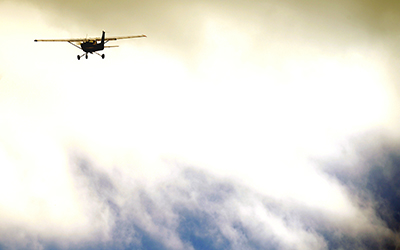Image Credit:
File ID 58656920 | © Rainer Pauschert | Dreamstime.com

Even though pilots enjoy a higher than average salaries and benefit from other great perks such as getting to travel the world, the pilot shortage is a real problem. Due to the high costs of training, people are selecting to choose other professions. As a result, airlines are struggling to find and hire the pilots needed to fly commercial flights. Some airlines are even offering to pay for training costs as a possible solution.
Perhaps there is a more feasible solution that should be considered. US National Aeronautics and Space Administration (NASA) is searching for alternatives and one such alternative is reducing the number of pilots in a cockpit to one or maybe have no pilots at all.
According to the European rules, the number of pilots required for commercial aircraft is two. A captain and a first officer. One pilot is flying the aircraft and the co-pilot monitors the flight and assists when necessary. This is true for all aircraft which can seat more than 20 people according to EASA.
The biggest concern with moving to a single-pilot system is safety. There is a higher rate of accidents among private and corporate flights. Captain Tilmann Gabriel, the chairman of the International Pilot Training Association, attributes the higher rate of accidents to the lack of monitoring.
A U.S. study conducted in 2015 found that two-pilot aircraft had slightly fewer accidents than single-pilot aircraft. While half of the single-pilot accidents were fatal only 45% of accidents involving two-pilot aircraft were fatal. Despite this difference, of the 107 accidents studied, two-pilot aircraft were responsible for more deaths.
“Other than the limitations of the operating rules, the biggest factor is the way the cockpit is designed.” says a spokesperson from Bombardier. “A cockpit can be designed for single-pilot operation, but for larger planes, it is typically designed for a two-crew operation as a basic requirement.”
In order to move to single-pilot aircraft, the entire aviation infrastructure needs to be changed. This change would cost billions of dollars and would be more expensive than finding and training new pilots.
According to Mr. Gabriel, 35,000 aircraft will be produced in the next few decades and they all will have two-pilot cockpits. In the same timeframe approximately 600, 000 pilots will be needed.
He concludes, “The future pilot will still be needed, but he or she will sit in an office flying and managing the aircraft from the ground like the drone pilots already do. In short, the pilot shortfall is a real threat to the growth of the airline industry in the next 20 years; but single pilot operations are not a quick fix,”.
For more information on the future of the industry, or to learn more about how to train to become an airline pilot, please contact Elevate Aviation located here in beautiful Salt Lake City, Utah.